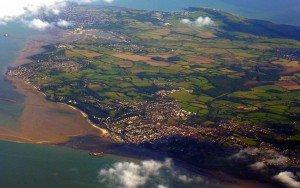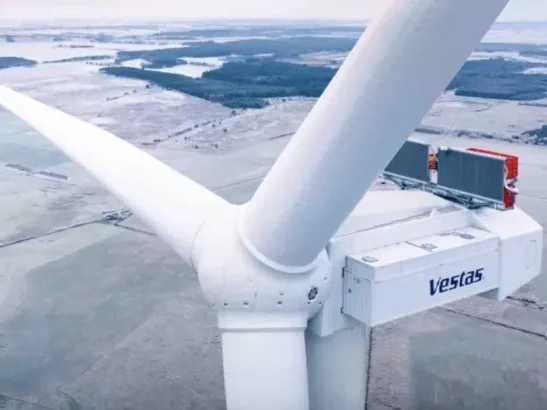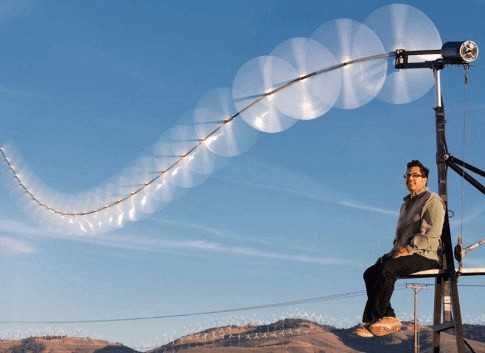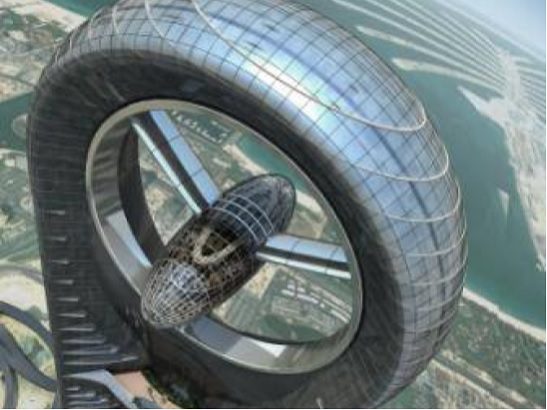The Isle of Wight, 2 miles off the South coast of Britain, is a diamond shaped island that has some fine views, a fine annual music festival (the 1969 one featured the Doors, Jimi Hendrix and Bob Dylan), an amazing castle (Carisbrooke) and is where my parents used to take me for holidays (Sandown and Shanklin)! But it could be remembered in the future as the first UK renewable energy green island eco paradise, setting the standard for the rest of the UK. The possibility of this has attracted none other than the influential National Geographic, to run a detailed feature on the renewable energy plans for the island.
A project known as Ecoisland is proposing to make the island a test bed for green technologies, with the ultimate aim of making the island a self-sufficient oasis of renewable energy in a mere 8 years time. The project already has attracted 70 corporate partners, including big hitters such as Toyota, IBM and Toshiba. This week it is playing host to a Ecoisland Global Summit where 500 delegates, including representatives from some 20 islands and regional communities, hope to agree an accord among islands that commit to becoming renewable energy self-sufficient by 2020. The Isle of Wight project expects to have a helping hand, with Ecoisland Partnership soon to announce details of a planned deal to give it hundreds of millions of dollars in financing.
The Ecoisland project is encouraging sustainable food and water initiatives, but its main thrust is to generate 60.5 megawatts (MW) of electricity using solar, tidal, waste, geothermal and wind energies. The blueprint is not new. In the 1990s Samsø, a Danish island in the North Sea- home to 4,300 people- invested heavily in solar and wind technologies and it is already 50% self-sufficient
The largest share of the renewable power now being planned, 25 MW, would come from photovoltaic solar panels, mostly installed on homes and businesses. Also in the works is a project with the University of Southampton to harvest up to 20 MW of power from the strong tides off the island in a field test of five or six tidal power devices. 5MW is expected to be raised from geothermal energy, while another 10MW is expected from an anaerobic digestion plant to process biowaste via pyrolysis, gasification or combustion.
But where is wind energy in all this? The English Channel and the Solent are renowned for strong winds (ferry crossings to the island and to the continent are often suspended due to the weather). Unfortunately, the local council rejected a plan for 5 wind turbines that would have generated 12.5MW of power. “Big turbines + small island= no no” one campaign went. However with the deployment of smaller turbines 0.5 MW could contribute to the overall renewable energy output. These could be Vestas’ small vertical axis turbines, or ones made by WindTronics of Michigan, USA.
There are plans for a smart grid too. A smart grid essentially uses the Internet to use information technologies to monitor and manage distribution by controlling load to match generation and to ultimately flatten demand peaks. The Smart grid proposed would be two-way in that it would allow the grid to obtain and react to information from smart metres and grid-friendly appliances.
There are 65,000 houses on the island. What’s in it for them? lower fuel bills- perhaps by up to 50%. The storage of spare power generated has been one of the banes of renewable energy. However Ecoisland’s grid will test some new battery technologies being developed by Toshiba as well as a hydrogen storage project. Hydrogen can be formed using electrolysis, a process that uses electricity to split water into hydrogen and oxygen. Hydrogen can be safely stored in underground caverns that exist on the island. Beyond being a backup source for the island’s power system, the hydrogen will also be available for use by hydrogen fuel cell cars. Carmakers including Toyota and Hyundai plan to make electric vehicles, hybrids and hydrogen cars available to the project. A program is being developed to lend the cars to residents for two to three days at a time. And Ecoisland plans to have 150 charging stations in place around the island within three years.
Gavin Foster, spokesman for the Isle of Wight council says that green technology and conservation are supported widely. He said that when the island’s recycling program recently became mandatory instead of voluntary, it proved very popular. Gaining public support was relatively easy- it seems the islanders have always felt themselves a little bit more independent and go-ahead when it comes to green systems. They also want to own the results- the island’s investors will be offered a mortgage-like investment that would allow Ecoisland to own the infrastructure once it’s paid back.
The hope is that the 20 islands and regions attending the global summit will sign an Ecoislands Accord, pledging to become renewable energy self-sufficient by 2020 and fully sustainable by 2030. Ambitious? Maybe, but once you’ve got the people on your side, that’s half the battle won!






